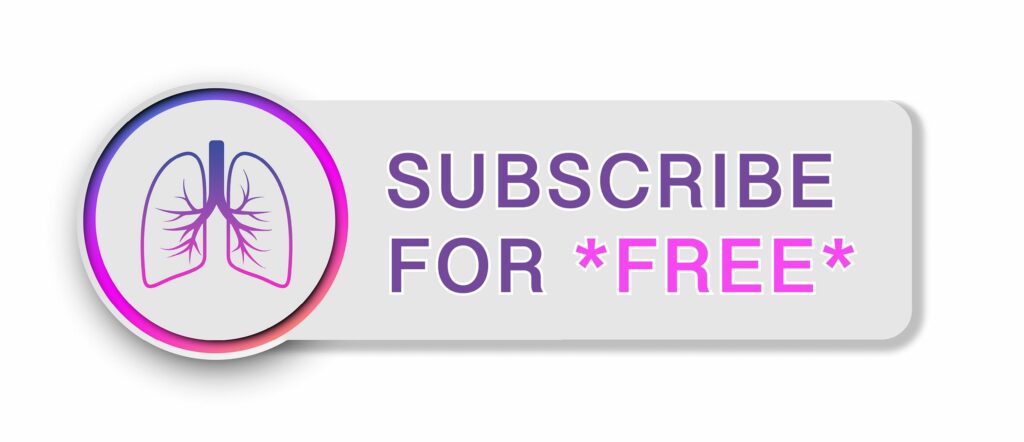Understanding the pulmonary data that PFTs like plethysmography and other lung volume tests provide for adult and pediatric patients is essential to the respiratory care team.
By Bill Pruitt, MBA, RRT, CPFT, FAARC
Pulmonary function tests (PFTs) are foundational to identify the presence and degree of pulmonary impairment. PFTs provide an objective measurement of lung function by examining the volumes and flows from a patient while breathing quietly and while performing various altered breathing patterns.
Most pulmonary function laboratories look at four areas in a complete test:
- performing spirometry to measure airway mechanics,
- pre/post bronchodilator spirometry to look for response to a bronchodilator and airflow reversibility,
- measuring lung volumes and capacities, and
- measuring diffusion capacity for carbon monoxide in the lungs.1

Most physician’s offices and clinics only perform spirometry (if they perform any PFT measurements) but most do not perform any pulmonary function testing (except for a pulmonologist office). Research is ongoing in PFT in improving or creating new devices and software, and in finding the best standards and recommendations/guidelines to advance the study of lung disease.
This article will explore what information PFTs provide in adults and children with a focus on lung volume tests, some of the new developments in devices, software, and standards as testing has evolved, and the changes brought about by the COVID-19 pandemic.
Lung Volumes and Capacities and FEV1
There are four lung volumes and four lung capacities.
Four Lung Volumes
- Tidal volume (TV) is the volume of air that is inspired and expired during resting, quiet breathing.
- The residual volume (RV) is what is left in the lungs after a full, complete spontaneous exhalation (blowing out as far as possible).
- Expiratory reserve volume (ERV) is found between TV and RV and is the volume of air that can be forced out beginning at the end of tidal volume breathing exhalation when exhaling to RV.
- Inspiratory reserve volume (IRV) is the volume of air that can be inhaled above the normal tidal volume inspiration (when taking in a full, complete breath).
Four Lung Capacities
The four lung capacities are made up of combinations of the volumes:
- Total lung capacity (TLC) is made up of all four volumes (RV + ERV + TV + IRV).
- Vital capacity (VC) is the combination of IRV, TV, and ERV and measures the amount of air exhaled after taking in a full complete breath and blowing out completely until unable to exhale any further. This measurement can be done “quietly” (defined as a slow vital capacity – SVC) or done by exhaling with maximal effort – defined as a forced vital capacity or FVC.
- Inspiratory capacity (IC) is the combination of TV and IRV and is the measurement of all the air that can be inhaled from the beginning of resting exhalation and breathing in to a full, complete inhalation.
- Functional residual capacity is the combination of ERV and RV – the amount of air that is in the lungs at the end of tidal volume breathing.
FEV1
FEV1 is the forced expiratory volume measured in the first second of exhalation after taking in a full complete breath and is measured during the FVC maneuver performed during spirometry. Spirometry can measure FEV1, FVC, FEV1/FVC, IC, and ERV but cannot provide measurement of TLC, RFC, or RV. These three can be obtained by the lung volumes measurement.
Predicted Values
Predicted values for all the measurements are based on age, height, sex, and race/ethnicity. Values decrease as we get older, increase with increased height, and females have smaller lungs and less volume. Weight is not included in the equations for predicted PFT values, however morbid obesity will often decrease lung volumes and body mass index (BMI) can help put results into a more correct perspective. Race/ethnicity are considered biological variables but have been called into question, since race/ethnicity can also be defined socially.
Over time, the definitions have changed and vary from country to country.2 The Global Lung Initiative 2022 (referred to as GLI-Global) has worked to address issues related to race/ethnicity in calculating reference values.3 Normal ranges for PFT measurements should provide the upper and lower limits of normal as determined by the upper and lower fifth percentiles (z-score of +1.65 and -1.65) and these thresholds should be used instead of the traditional approach using 120% and 80% to define normal values for most tests.3
Lung Volume Measurement
When spirometry shows a decreased FEV1 and FEV1/FVC, measurement of lung volumes can be important to evaluate situations like air-trapping and hyperinflation (reflected in an increased FRC, RV, and TLC). Restrictive disease usually shows decreases in most (or all) volumes and capacities and a normal or increased FEV1/FVC. A diagnosis of restrictive disease can be suggested through spirometry but is more fully assessed by lung volume measurements.
Body plethysmography (often referred to as using the body box) is the gold standard for examining lung volumes and, in addition, provides testing for airway resistance.
To perform plethysmography, the subject sits inside a large, clear, airtight plastic box that contains a fixed amount of air. During the test procedure the door is closed, and the subject wears a nose clip and breathes through a mouthpiece connected to a pneumotachometer which measures airflow, changes in pressure, and inspired/expired volume. At the same time, the box measures volume changes by measuring gas displacement as the thorax expands by swelling up and out during inspiration then contracts (shrinks) during exhalation. The box also measures pressure changes inside the box related to breathing as the thorax expands and contracts.
The key measurements from body plethysmography include TLC, FRC, and RV, which are unable to be measured by spirometry. Boyles’s law (P1V1 = P2V2) provides the basis for determining the key measurements in plethysmography.4-6 Due to the need for the subject to be inside the body box with the door closed, this test may be difficult for someone who is claustrophobic, is in a wheelchair, has a full hip to ankle cast on a leg, is morbidly obese, extremely tall, or for young children.
Alternative measurements such as helium dilation, nitrogen washout, and using chest radiographs (CXR) or high-resolution computed tomography (HRCT) have been used in measuring lung volumes but have some limitations. The helium dilution and nitrogen washout tests use gas analysis and have two methods of obtaining FRC: either through measuring a single breath of the gas mixture or by multiple breaths. Lung volume may be underestimated in the helium dilution and nitrogen washout tests if there are areas in the lungs that are under-ventilated or not ventilated (ie, with the presence of bullae or mucus plugs). If there are any leaks in the system (ie, around the mouthpiece) the test results in gas analysis will not be reliable. The chest imaging approaches (CXR and HRCT) have been found to correlate ±15% in measuring TLC compared to the body plethysmography testing.1,6 As for the ERS/ATS recommendations for lung volume measurement, the standards are in the process of being updated and should be made public soon, according to the ATS.7
PFT measurements in lung diseases usually have the following findings. Obstructive diseases reflect a decreased FEV1, a normal or decreased FVC, and a decreased FEV1/FVC and is found in asthma (when abnormalities are seen) and COPD. At times, asthma patients will not have an abnormal PFT and if asthma is suspected (based on clinical history and signs/symptoms), bronchial provocation is indicated. With a significant response to a bronchodilator, asthma is the main consideration. Bronchial provocation testing that shows a significant response also supports asthma as the diagnosis. Diffusion testing for carbon monoxide transfer (DLCO) is decreased in emphysema (due to the loss of alveolar surface area) while remaining normal or increased in asthma.6 In patients with chronic obstructive disease, air-trapping may develop which increases the RV and FRC while decreasing the IC and VC. As air-trapping persists and becomes more pronounced, the thorax itself may increase, causing hyperinflation and a barrel chest appearance with an increase in TLC.
Restrictive disease is reflected in a decreased TLC, FEV1, and FVC while having a normal FEV1/FVC and a normal appearing (but smaller) flow volume loop. The DLCO tends to be decreased, particularly in fibrotic changes in the lung, due to thickening of the alveolar/capillary membrane. The causes of restrictive patterns include interstitial lung diseases, severe skeletal abnormalities, or paralysis of the diaphragm.6
PFT in Children
Generally, PFT testing can be performed by children around the age of 6-years-old due to the fact that acceptable results depend on following specific breathing patterns. The current recommendations from both the National Asthma Education and Prevention Program (NAEPP) and the Global Initiative for Asthma (GINA) have PFT included in the initial evaluation and follow-up assessment of children with asthma.8 Spirometry is frequently utilized to assess pediatric lung disease including asthma, cystic fibrosis, and bronchopulmonary dysplasia. With young children, the specific maneuvers needed to get reliable results are difficult to perform. Two key measurements that need to show reproducibility are the flow-volume curve (or loop) in at least three recordings and the duration of exhalation (which needs to exceed one second and should display a plateau to be reliable).
Lung volumes in children are measured by whole-body plethysmography and helium dilution (or by nitrogen washout). The child may be placed on a parent’s lap inside the body box if needed to help the child relax and follow directions. Sometimes allowing the child to play with toys while in the box prior to testing helps allay fear and apprehension. Again, patients less than 6-years-old generally cannot be tested successfully due to the complex maneuvers needed (ie, panting against a closed shutter), or they will not tolerate being inside the closed box. Lung volumes by gas dilution (helium or nitrogen washout) requires less cooperation from the child, so this approach may be more successful than using the body box. However, as stated earlier, the gas dilution approaches may underestimate FRC when there is significant air-trapping and lung areas that are not communicating with the central airways.8
PFT Changes Due to COVID-19
The COVID-19 (SARS-CoV-2) pandemic caused many PFT labs to close or severely limit operation in order to reduce spread of the virus to other patients and to healthcare staff.
During PFT procedures, there is increased occurrence of coughing which increases the risk of exposure to infected droplets and aerosols generated by the cough. Use of nebulized medications also increases risk of releasing infectious aerosols. PFT labs screen patients to try and avoid having patients with COVID-19 infection come in for testing. Patients exhibiting flu-like symptoms or COVID-19 symptoms should have testing postponed. Screening is not effective in patients with COVID-19 infection who are asymptomatic.
In light of these issues, testing is limited to those cases where the PFT results are essential to the care and management of the patient (ie, pre-operative evaluations, diagnosis of dyspnea, evaluating possible pulmonary toxicity of medications, lung transplantation monitoring, to aid in accurate diagnosis of asthma or COPD). Additionally, use of nebulizers to administer bronchodilators (or administer methacholine for bronchoprovocation tests) is minimized to limit aerosol generating procedures.
To prevent the spread of COVID-19, hand hygiene and increased use of personal protective equipment (PPE) is emphasized. PPE includes gloves, gown, face mask or shield, with a preference to use N-95 masks, powered air purifying respirators (PAPR) over the use of surgical masks. All patients in the PFT area should wear a face mask. Filters are placed on all circuits that interface with the patient and changed between patients.
Patients are not to wait in a common area (often they may wait in their car until called by phone to come in). Keep doors closed in procedure rooms. Circulating air from testing rooms should be exhausted directly to the outside. Know the room air exchange rate and wait to test the next patient until a complete air turnover has occurred (ie, if the exchange rate is 6 per hour, minimum wait time between testing would be 70 minutes). Enhanced cleaning procedures are in place to clean/disinfect any surfaces that could potentially be a source of contact with the virus.8-9
Conclusion
PFT and lung volume determination are valuable in making a correct, accurate diagnosis and in managing patients with lung diseases. Changes have continued in how reference values are calculated, in the technical aspects of testing, and in the interpretation of the results. New devices are being approved that can help make testing easier and more effective, improve management of the results, and aid in making accurate, timely diagnosis. Testing children calls for special consideration and patience on the part of the lab staff. COVID-19 has brought changes in how patients are tested and in infection prevention and control.
Respiratory therapists should stay up-to-date on PFT testing by continuing education and study to be better prepared to care for patients, perform the tasks required, and assist the other members of the healthcare team in providing excellent care.
RT
Bill Pruitt, MBA, RRT, CPFT, FAARC, is a writer, lecturer, and consultant. Bill has over 40 years of experience in respiratory care in a wide variety of settings and has over 20 years teaching at the University of South Alabama in Cardiorespiratory Care. Now retired from teaching, Bill continues to provide guest lectures, participates in podcasts, and writes professionally. Images and references available online.
For more info, contact [email protected].
References
- From UpToDate, Overview of pulmonary function testing in adults: https://www.uptodate.com/contents/overview-of-pulmonary-function-testing-in-adults#
- Marciniuk DD, Becker EA, Kaminsky DA, McCormack MC, Stanojevic S, et al. Effect of Race and Ethnicity on Pulmonary Function Testing Interpretation: A CHEST/AARC/ATS/CTS Evidence Review and Research Statement. Chest. 2023 Mar 25.
- From UpToDate, Selecting reference values for pulmonary function tests: https://www.uptodate.com/contents/selecting-reference-values-for-pulmonary-function-tests#
- From the Cleveland Clinic website, “Body Plethysmography: Purpose, Procedure & Results”. https://my.clevelandclinic.org/health/diagnostics/15467-body-plethysmography-pulmonary-function-test.
- From the Lung Institute website, “Lung Plethysmography: What It Is And Why It’s Done”. https://lunginstitute.com/lung-plethysmography/
- From the University of Iowa Healthcare website, “Pulmonary Function Testing (PFT) made simple”. https://medicine.uiowa.edu/iowaprotocols/pulmonary-function-testing-pft-made-simple
- From the Medicalxpress website, “Standard for pulmonary function tests gets an update”. https://medicalxpress.com/news/2022-03-standard-pulmonary-function.html
- From UpToDate website, “Overview of pulmonary function testing in children”. https://www.uptodate.com/contents/overview-of-pulmonary-function-testing-in-children
- From American Lung Association website, “Considerations for Conducting Spirometry During and After COVID19”. https://www.lung.org/getmedia/db83d857-3642-4ec0-a120-405d44f98711/considerations-for-conducting-spirometry-during-and-after-covid19-07062020-(002).pdf
Photo 1865328283 | dot.studio | Shutterstock.com










